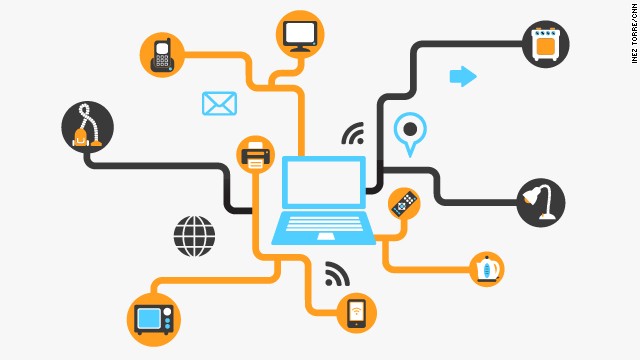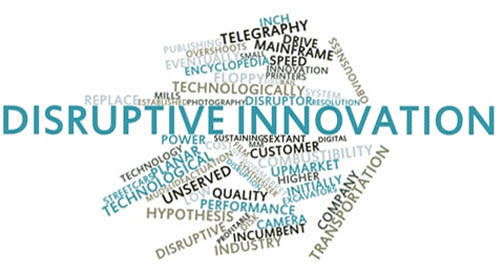Soroko
Disruptive IoT Innovation

In this UX Magazine article, author Avi Itzkovitch disucusses how the Internet of Things can be used to create disruptive innovations. The main point of this article talks about how connecting a device or sensors to a network is just not enough to create a new disruptive technology, but how we use the connection to our advantage to disrupt current technologies. One example he uses is under his titled section “A Lock on Added Value”. There are already technologies that allow a user to unlock one’s front door via smartphone. However, he talks about a company called August Smart Lock who added an extra functionality to their smart lock that allows the user to share a virtual key to household members or other houseguests who are visiting your home. This gives the smart lock an added value by providing a virtual network around monitoring and providing access to your house. Now this idea certainly seems to have its flaws, but it is a creative idea that could disrupt the old technology that has secured our houses for hunsdreds of years. He also states a few other examples in the article of how utilizing connected devices can disrupt current product markets. Can you think of any examples of how using already exisitng technologies that have the ability to connect to a network can disrupt current markets?
Integrative Thinking

In this article entitled Integrative Thinking, author Graham Douglas explores the differences between critical thinking and integrative thinking and addresses how we are programmed to think critically because of our education and gives us tips about ways of breaking that hard coding. He begins by talking about how our education conditioned us to fix problems by breaking the problem down into parts, look for past data about the parts, analyze trends for the data, and settle on a course for action. He discusses how this gives us a disadvantage in our lives and work. He then discusses the steps to integrative thinking and gives us tips on how to become integrative thinkers. These tips include:
1. Memorize some general categories to help trigger connections in your mind; for example, people, market, product, money, physical, social and cultural environment.
2. Think integratively more often so you habitually make connections to create a whole new picture rather than habitually break down an old picture into its parts and put it together again with a “facelift.”
3 Wonder, from many angles, about what you have and what you want. Problem solving is simply the negotiating of change from what you have to what you want.
4. Create a sensible narrative connecting your wonderings.
5. Manage your experiences in acting out the narrative.
Would you agree with Douglas when he says that our way of thinking has been manipulated by the education we receive? Do you believe that every person has the potential to become an integrative thinker?
Most Disruptive Technology Over the Next 5 Years
In this TIME.com article, author Tim Bajarin explains that the most disruptive technology that we will experience over the next five years is not a new technology. The most disruptive technology is the Internet. He begins to talk about how the Internet will have massive disruptive global implications. He bases his argument on the fact that when you are connected to the internet, you have access to information. He then talks about how smartphone sales are projected to be about 1.5 billion in 2015 and nearly every cell phone will be a smart phone by 2018. At the same time, new wireless infrastructure being built in developing countries and the decreasing costs of cell phones will give more people access to the Internet and that this could result in major political, economical and educational ramifications. Can you think of any examples of disruptions/ramifications that can be caused in developing countries or countries with oppressive governments?
Disruptive Innovation and Education

Disruptive Innovation and Education
In this Forbes article, author Michael Horn talks about his interaction with Clay Christensen and how they used disruptive innovation to suggest ways for public schools to innovate. Horn states that the education system that we have today is, in many ways, built as a sorting system. “Those students who can’t keep up with the pace are sorted out at various intervals – an arrangement that worked fine for many in the past, but in today’s knowledge economy is no longer OK.” Horn suggested that online education is a way for public schools to cater to the individual needs that each student has instead of treating them all as if they are exactly the same. Horn also states that online education could also disrupt higher education. He states that it could severely affect some institutes a lot more than others but the ones that aren’t affected that much could adopt it as sustained innovation. Do you think that online education is more disruptive towards k-12 learning or higher education? Do you think that this could be the future of learning? Will it affect any other industries?
The Top 5 Disruptive Technologies of 2014

An Investor’s Guide to Disruptive Innovation
In this article, Jason Stutman talks about the 5 most disruptive technologies of last year and touches on some of the industries that they will disrupt. Some of which we have discussed in class. He lists that Additive Manufacturing, The Automated World, The Internet of Things, Next Generation Interface, and Next Generation Genomics are the five most disruptive technologies. Additive Manufacturing is the process of buiilding three-dimensional objects with machines using CAD software (3D Printing). This is disrupting manufacturing as a whole because it can literally make anything and results in less waste, faster output, and lower operational costs. Automated World is what its title suggests, automation. This technology could disrupt the job market and affect areas such as automated retail, advanced robotics, and artificial intelligence. The Internet of Things is the concept of everyday objects becoming connected to the web. This disruptive technology is directly tied to the automated world. Next Generation Interface refers to the fact that our devices become smaller and smaller that we will need a new means on interaction with them. Lastly, Next Generation Genomics refers to treatment based on genetic sequencing rather than symptoms. All of these are disruptive based on facts sited in the article. What technologies will be considered the most disruptive for 2015?
Making An Effective Presentation

Making An Effective Presentation
In this Forbes article, author Bill Rosenthal explains the three main components to delivering a successful and effective presentation. He first highlights that the three most important parts to any presentation is: (1) making an emotional connection with the audience, (2) present with energy, and (3) spell out the payoff for the audience. Rosenthal states that conciously or not, an audience forms a bias for or against a presenter within seconds. The key to this step is ensuring that you come across as likale and trustworthy. He says that the key to being likable is simple: show you like the audience and they will reciprocate, and once that is acheived, the trust will come. The next step is to present with energy. Rosenthal states that the way to get the audience excited about your presentation is by showing them your own excitement. The last step is spelling out the payoff for the audience. Rosenthal states that you should never assume that the audience will understand the take away as quickly as you, the presenter, has. He says that you need to state your key facts and then reiterate them in different ways so that they can sink in. Seeing as how we are all going to be giving presentations on our projects, I felt that this article could be helpful. Can you think of any other techniques that you can use to incorporate Rosenthal’s three key components within your own presentations?
Big Bang Disruption
How Innovations Become Better And Cheaper
In this Forbes article, the authors Paul Nunes and Larry Downes expand on the idea of disruptive innovation and talk about Big Bang Disruption. The key difference between the two is that Big Bang disruption does not follow conventional strategic paths or normal patterns of market adoption. Big bang disruptions experience dramatic market adoption right off the bat and cause unintended collateral damage to incumbent businesses. The defining characteristic of a Big Bang Disruption is that from the moment of introduction, it is better and cheaper than the traditional product and services it replaces, and leads to sudden abandonment of the old for the new. One example that they use throughout the article is the smartphone and how it disrupted books, video cameras, papers, wristwatches, cash registers, day timers, wallets, keys, newspapers and magazines, pocket calculators, and many more. Can you think of any other products that resulted in Big Bang Disruption?


